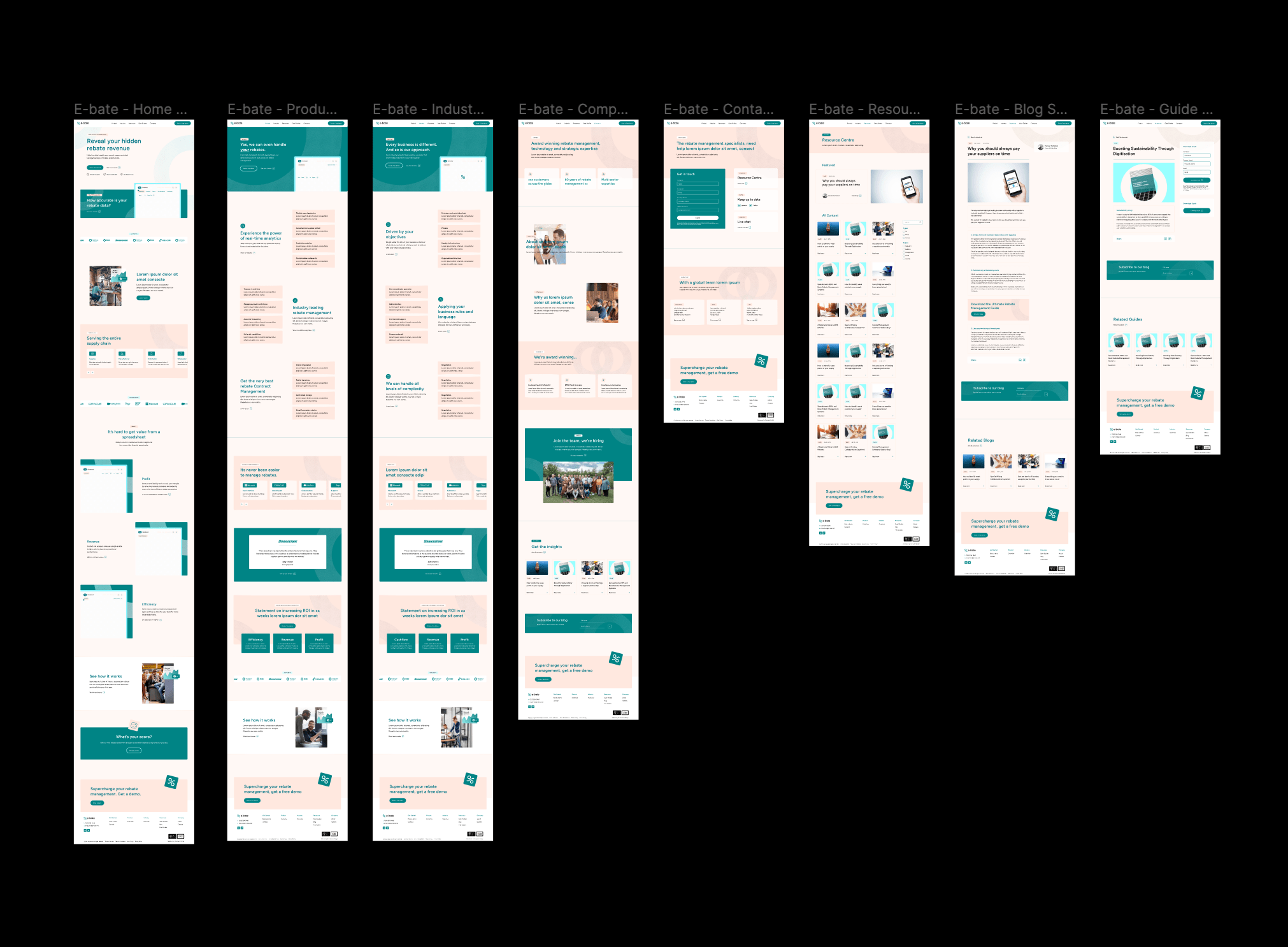In today’s digital age, having a strong online presence is crucial for businesses of all sizes.
A well-designed and functional website can significantly impact your brand’s image and overall success. However, as technology and customer expectations evolve, it’s essential to regularly assess whether your existing website is meeting your needs. In this article, we will explore the key factors to consider when determining if you need a new website and guide you through the decision-making process.
Understanding the Need for a New Website
Building a new website is a significant undertaking that requires careful consideration and planning. Before diving into the specifics of creating a new website, it’s essential to evaluate the current state of your online presence. By assessing your existing website, you can identify any shortcomings or areas for improvement.
When evaluating your current website, there are several aspects to consider. First and foremost, take a closer look at its design. Is it visually appealing? Does it effectively communicate your brand’s message? A well-designed website not only captures the attention of visitors but also conveys the essence of your brand.
Functionality is another critical factor to assess. Is your website easy to navigate? Can visitors find the information they are looking for quickly and effortlessly? A user-friendly interface is essential for providing a positive user experience and keeping visitors engaged.
Furthermore, it’s crucial to examine any technical issues or limitations your current website may have. Are there any broken links or error messages? Does it load quickly and perform well across different devices and browsers? A website that is plagued with technical issues can frustrate visitors and hinder your online success.
Once you have evaluated your current website, it’s time to identify your website goals. Clearly defining your objectives is crucial for determining whether a new website is needed. Consider what you hope to achieve through your website. Are you looking to increase brand awareness, generate leads, or drive online sales? Your website should align with these goals and help you achieve them.
If your current website is falling short of these goals, it may be time for a revamp. A new website can provide a fresh start and allow you to implement strategies and features that will better support your objectives. Whether it’s a modern design, improved functionality, or enhanced user experience, a new website can help you take your online presence to the next level.
Key Factors to Consider When Building a New Website
Building a new website involves careful consideration of various factors, from budget considerations to choosing the right platform and ensuring search engine optimization (SEO) and mobile responsiveness.
Creating a website is an exciting endeavour that requires thoughtful planning and attention to detail. By taking the time to consider key factors, you can ensure that your website not only meets your business needs but also provides an exceptional user experience.
Budget Considerations
Establishing a realistic budget for your new website project is essential to avoid overspending. It’s important to consider the costs associated with web design, development, ongoing maintenance, and any additional features or functionalities you may require.
When setting your budget, it’s crucial to strike a balance between your desired website features and your available resources. Allocating funds for professional web design and development services can help ensure that your website is visually appealing, functional, and user-friendly.
Choosing the Right Platform
When building a new website, it’s crucial to select the right platform that aligns with your business needs. There are various platforms available, each with its own set of features and customization options.
Platforms like WordPress, Shopify, and Wix offer different levels of flexibility and scalability. WordPress, for example, is a popular choice for its extensive range of themes and plugins, allowing for a highly customizable website. Shopify, on the other hand, is a specialized platform for e-commerce businesses, providing robust features tailored to online selling.
Evaluating each platform’s strengths and weaknesses is essential to make an informed decision. Consider factors such as ease of use, available support, and integration capabilities with other tools or systems you may be using.
SEO and Mobile Responsiveness
In today’s mobile-centric world, having a website that is optimized for both desktop and mobile devices is essential. Mobile responsiveness ensures that your website adapts seamlessly to different screen sizes, providing a consistent and user-friendly experience.
Furthermore, ensuring your website is search engine friendly and follows SEO best practices will help improve its visibility and attract organic traffic. Optimizing your website’s metadata, using relevant keywords, and creating high-quality content are some of the strategies that can enhance your website’s search engine rankings.
It’s also important to consider other SEO factors such as site speed, URL structure, and internal linking. By paying attention to these details, you can improve your website’s overall performance and user experience.
Building a new website is an opportunity to establish a strong online presence and connect with your target audience. By considering budget, platform selection, and SEO and mobile responsiveness, you can create a website that effectively represents your brand and achieves your business goals.
The Role of Website Design and User Experience
Website design and user experience play a fundamental role in captivating and retaining visitors. A user-friendly design that prioritizes intuitive navigation, clear calls-to-action, and compelling visuals can significantly impact user engagement.
When it comes to website design, there are several key elements to consider. One important aspect is the layout of the website. A well-organized layout ensures that users can easily find the information they are looking for. This includes placing important content in prominent positions and using clear headings and subheadings to guide users through the page.
Another crucial factor in website design is the use of colour and typography. The choice of colours can evoke certain emotions and create a specific atmosphere on the website. Similarly, typography plays a significant role in conveying the brand’s personality and enhancing readability. By selecting appropriate fonts and sizes, designers can ensure that users can easily read and understand the content.
Importance of a User-Friendly Design
Creating a website that is easy to navigate and understand is crucial for maximizing user satisfaction. Consider factors such as font size, colour contrast, and overall layout to ensure users can quickly find the information they need and complete desired actions.
Furthermore, a user-friendly design can also have a positive impact on search engine optimization (SEO). Search engines like Google prioritize websites that provide a seamless user experience. By focusing on user-friendly design principles, you can improve your website’s visibility in search engine results, driving more organic traffic to your site.
It is also worth mentioning the importance of responsive design. With the increasing use of mobile devices, it is essential to ensure that your website is optimized for different screen sizes. A responsive design adapts to the user’s device, providing an optimal viewing experience and improving overall user satisfaction.
The Impact of Website Speed
In today’s fast-paced world, users expect websites to load quickly. Slow-loading websites can result in high bounce rates and decreased user satisfaction. Optimizing your website’s speed by minimizing large files, leveraging browser caching, and utilizing content delivery networks can significantly enhance the user experience.
Website speed not only affects user experience but also impacts search engine rankings. Search engines take into account the loading speed of a website when determining its position in search results. Therefore, improving your website’s speed can potentially boost your organic search visibility and attract more visitors.
Additionally, fast-loading websites are more likely to convert visitors into customers. Studies have shown that even a one-second delay in page load time can lead to a significant decrease in conversion rates. By prioritizing website speed, you can provide a seamless browsing experience that encourages users to stay on your site and take the desired actions.
Content Strategy for Your New Website
Content is an integral part of your website and plays a crucial role in attracting and retaining visitors. Consider the following strategies when developing your content plan for the new website.
Creating Engaging Content
Engaging content can captivate your audience and encourage them to explore your website further. Develop high-quality, relevant, and informative content that aligns with your brand’s message and resonates with your target audience.
Regularly Updating Your Website Content
Keeping your website content updated is crucial for maintaining relevance and user interest. Regularly review and refresh your content to ensure it aligns with your current goals, industry trends, and user needs. This will also positively impact your search engine rankings.
Making the Final Decision: Do You Really Need a New Website?
After carefully considering all the factors discussed above, it’s time to make the final decision on whether a new website is the right choice for your business.
Weighing the Pros and Cons
Evaluate the advantages and disadvantages of investing in a new website. Consider factors such as the potential impact on your brand’s image, the ability to achieve your website goals, and the overall return on investment.
Seeking Professional Advice
If you are uncertain about whether a new website is necessary, consider seeking advice from web design professionals. They can provide insights tailored to your industry and business goals and help you make an informed decision.
In conclusion, regularly evaluating your website’s performance and considering key factors such as design, functionality, user experience, content, and goals will help you determine whether you need a new website. Remember, your online presence is an essential reflection of your brand, and investing in a new website can have a positive impact on your overall success.

